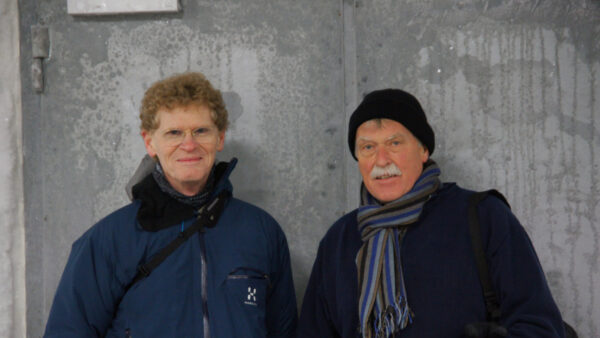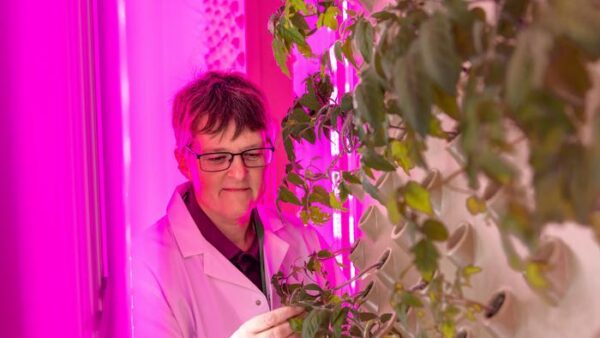European Seed magazine meets up with Andreas Popp, Head of Global Intellectual Property, Biotechnology, from BASF, one of the nine founding members of this new platform and finds out why European farming needs this initiative.
Read part one.
European Seed magazine (ES): Do I understand, therefore, that the three aims of the ACLP will outline how the ACLP can contribute to food security?
Andreas Popp (AP):
Did you know that the EU currently relies on about one third the size of its domestic arable land outside its own territory to ensure European food?1 We all know that we have to do more with less. More agricultural output using less land outside of Europe to reduce imports. We need to grow food in a more sustainable and efficient manner. And ensure that yields per hectare increase. This will only be possible with more innovation in agriculture.
Food security can be improved significantly through plant breeding innovation, resulting in crop enhancements that can lead to higher quantities of food produced with fewer inputs, of a higher quality and at affordable prices. This is the way forward in my view.
What is new, thanks to the establishment of the ACLP, is that today, traits, resulting from breakthrough technologies, will be rapidly available for all its members who are interested in maintaining this flow of new and improved varieties in the future. An initiative like the ACLP helps provide a level playing field for all its members.
ES: If we consider another point of view — for example the advocates of open-source seeds? Does the ACLP consider a dialogue possible?
AP: In general, seed companies have always been open to dialogue. If the discussion is recognizing the benefits for society stemming from the breeders’ exemption and all IP laws, the ACLP is open to constructive exchange with those who are sharing the values the platform pursues and who recognize and respect IP rights.
The ACLP is a form of open-source system based on the “free access but not access for free” principle. This is something that I believe as an expert is essential for sustainable open innovation, protecting the intellectual property of innovative agricultural companies, providing transparency, fostering innovation and giving access and fair conditions to keep and even speed up the innovation pace. For example, in the European Union (EU), a limited breeders’ exemption exists in a few Member States’ patent laws but even where it exists it is not uniform, so one of the goals is to grant uniform access to patented traits for breeding for all members, regardless of which country within the ACLP territory they operate in. The ACLP is designed to make things simpler and easier, as well as more secure from the legal standpoint. It will ensure that all ACLP members will be able to breed with patented traits that are commercialized on the open market by other members.

ES: But in countries where the limited breeders’ exemption exists? Surely this platform is not necessary.
AP: I am sure that the ACLP will support breeders across Europe, giving additional tools to breeders to be more effective, for example, patented marker information associated with the ACLP traits. In addition, the transparency concerning commercial variety patents and finally the guarantee for members to get a fair licence for commercialisation are just some of the advantages of the ACLP.
In some countries where such a breeders’ exemption exists, the two IP rights are complementary as they protect different types of innovations. On one hand, plant variety rights provide protection for a specific combination of genetics, which characterize a specific variety but don’t protect individual traits. On the other hand, patents provide protection for individual traits which can be present in many varieties but don’t protect the genetics of a plant variety.
ES: What is the risk that the ACLP will perpetuate the practice of patenting plants and seeds?
AP: The European legislation makes it very clear what is patentable and what is not. The ACLP will not change anything in that sense, but it will make available for breeding and licensing traits that are patented in Europe. Patenting in combination with the ACLP diffuses and promotes further innovation, so the ACLP will perpetuate and stimulate innovation, which will then be widely available to all ACLP members. As I mentioned earlier, the ACLP is a collaborative source for plant breeding innovation.
While plant breeding has been very successful and has delivered today’s highly productive crop varieties, the rate of genetic gains must double to meet the projected future food and feed worldwide demands and cope with the ongoing climate change. This can only be achieved by continuous investments by the plant breeding sector.
Editor’s Note: The ACLP will be setting up the legal entity in Brussels. If any breeding company or public institution is interested in becoming a member or simply wishes to know more: contact – Agricultural Crop Licensing Platform (aclp.eu)













